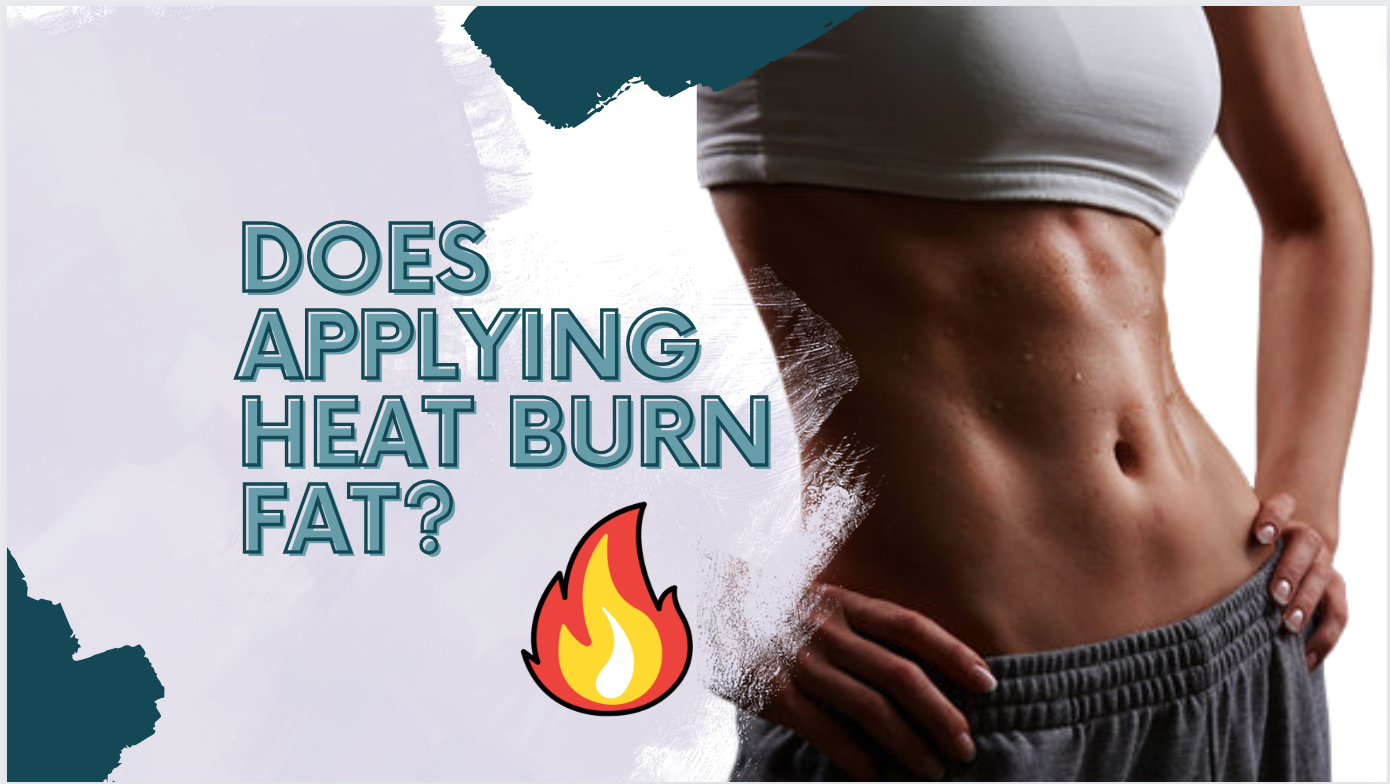Unveiling the Truth: Does Applying Heat Burn Fat?
In the quest for weight loss, people have tried numerous methods, ranging from intense workouts and strict diets to various supplements and treatments. One particular approach that has gained popularity is the use of heat therapy to shed excess fat. The idea behind this method is that by applying heat to certain areas of the body, fat cells can be stimulated to break down and be eliminated.
However, before embarking on any new weight loss regimen, it is crucial to examine the scientific basis behind such claims. Thus, this article aims to explore the question: Does applying heat burn fat? By examining current research and expert opinions, we can gain valuable insights into whether heat therapy can indeed contribute to effective and sustainable weight loss strategies.

The connection between heat and fat burning
The connection between heat and fat burning has long been a topic of interest in the world of fitness and weight loss. Many studies have shown that when our bodies are exposed to heat, such as through saunas or hot baths, it can actually help accelerate the process of burning fat. This is because heat increases our metabolic rate, causing us to burn more calories even at rest. So, does applying heat burn fat? Yes, it appears that exposing the body to heat can aid in fat burning by boosting metabolism and promoting calorie expenditure.
One explanation for this phenomenon is that when we are exposed to heat, our bodies try to cool down by increasing blood flow and perspiration. This increased blood flow not only helps regulate body temperature but also delivers oxygen and nutrients to our muscles more efficiently. As a result, our metabolism kicks into high gear, leading to an increase in calorie burn.
Furthermore, research suggests that heat exposure may activate certain proteins in our cells called uncoupling proteins (UCPs), which can promote fat oxidation.
The role of heat in increasing metabolism
Heat plays a significant role in increasing metabolism, which refers to the body’s rate of energy expenditure or calorie burning. The increase in metabolism occurs in response to exposure to heat or high temperatures, and this phenomenon is known as thermogenesis. There are several ways in which heat influences metabolism:
- Basal Metabolic Rate (BMR) Increase: The basal metabolic rate is the number of calories the body needs to maintain essential functions at rest. When the body is exposed to heat, such as during hot weather or in a heated environment like a sauna, it tries to dissipate the excess heat to maintain its core temperature. This process requires additional energy, causing a temporary increase in BMR.
- Heat-Induced Thermogenesis: The body produces heat as a byproduct of energy metabolism. When the ambient temperature is high, or when the body is subjected to heat stress, it triggers a rise in thermogenesis. This means the body burns more calories as it generates heat to adapt and cool down.
- Exercise Performance: Heat exposure can enhance exercise performance, leading to more intense workouts. During exercise, the body burns calories to fuel muscular activity. When exercising in a hot environment, the body may work harder to regulate temperature, resulting in additional calorie burn.
- Activation of Brown Adipose Tissue (BAT): Brown adipose tissue (brown fat) is a specialized type of fat that generates heat to help regulate body temperature. It contains a higher number of mitochondria, which are responsible for energy production and heat generation. Exposure to cold temperatures is known to activate BAT, but some studies suggest that mild heat exposure might also have a similar effect, leading to increased calorie expenditure.
The effectiveness of heat-based weight loss methods
Heat-based weight loss methods, often referred to as “thermal therapies,” involve using heat to promote weight loss and fat reduction. There are various approaches to heat-based weight loss, including saunas, hot baths, heat wraps, and certain medical procedures like laser liposuction and radiofrequency treatments. Let’s explore the effectiveness of these methods:
Saunas and Hot Baths:
Spending time in a sauna or hot bath can cause sweating, which may result in temporary weight loss through fluid loss. However, this weight loss is not due to fat burning but rather water loss, and it is quickly regained once you rehydrate. Saunas can be relaxing and offer other health benefits, but they are not effective as a primary weight loss method.
Heat Wraps and Creams:
Heat wraps and creams claim to promote fat loss through increased blood flow and metabolism in the targeted area. However, there is limited scientific evidence to support their effectiveness in significant and sustainable weight loss. Any reduction in size is likely temporary and related to fluid loss.
Laser Liposuction:
Laser liposuction is a medical procedure that uses laser technology to break down fat cells. It is considered more effective than traditional liposuction in terms of recovery time and reduced side effects. While it can lead to some fat reduction in specific areas, it is not a comprehensive weight loss solution and is typically reserved for spot reduction in individuals who are close to their target weight.
Radiofrequency Treatments:
Radiofrequency (RF) treatments use electromagnetic waves to heat and tighten the skin. Some RF devices claim to help with fat reduction by breaking down fat cells. Like other heat-based methods, they may lead to minimal fat reduction and skin tightening, but they are not a substitute for overall weight loss strategies.
Final Thoughts
In conclusion, while applying heat to the body may increase sweating and make us feel like we are burning fat, there is no scientific evidence to support the claim that heat alone can directly burn fat. Does applying heat burn fat? Fat loss occurs when we create a calorie deficit through a combination of proper nutrition and regular exercise. While heat may have some beneficial effects on muscle recovery and circulation, it is not a magic solution for weight loss.
To achieve sustainable fat loss, it is important to focus on overall lifestyle changes such as maintaining a balanced diet and engaging in regular physical activity. So instead of relying solely on heat to burn fat, let’s prioritize healthy habits for long-term success.
FAQs
Will wearing a waist trimmer belt help me lose belly fat?
Unfortunately, wearing a waist trimmer belt alone will not lead to spot reduction of belly fat. To lose fat in that area, you need a comprehensive approach involving proper nutrition and regular exercise.
Is it true that wrapping plastic wrap around my stomach helps burn belly fat?
Wrapping plastic wrap around your stomach is an ineffective method for burning belly fat. It may create temporary water weight loss due to excessive sweating but will not target actual fat cells.
Do heated workouts burn more calories than regular workouts?
Heated workouts might make you feel like you’re exerting more effort due to increased sweat production, but they do not significantly impact calorie burn compared to regular workouts performed at similar intensity levels.







